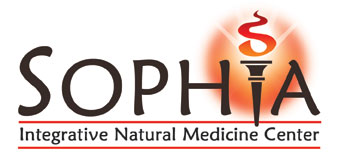Blood Pressure: Here‘s the deal, there is both good and bad news about BP
To make it quick, lets first start with the bad…
The Bad News: All too often, hospitals and other health care clinics don’t always measure BP accurately. It’s just the truth. Many times, readings are unreliable and at times, inconsistent.
Even further, the general public awareness on how to control BP is commonly misunderstood. Patients with high blood pressure (HBP) feel they have no other option except to take medication for the rest of their life.
The Good News: There is more to blood pressure than meets the eye.
That said, this article will share a few facts about blood pressure that has always been a well- kept secret, until NOW…
The Basics of Blood Pressure
Before we start, let’s take a quick minute to explain the basics of BP. First off, blood pressure originates in the heart and is produced by two forces. The first force occurs when the heart ejects blood out into the arteries (systolic). The second force is found when the arteries relax between each beat (diastolic).
Here are some quick general guidelines from the American Heart Association:
Normal blood pressure – Below 120/80.
Pre-Hypertension – Between 120-139/80-89
Hypertension – Between 140-149/90-99
Normally, the entire vascular system should be flexible in order to function properly. The main reason for the loss of plasticity is from arteriosclerosis (build-up of plaque). This forces the blood to pull into a smaller area. When this occurs, the pressure increases in the vessels (hence the word, blood pressure).
Thus, an elevated blood pressure will make the heart muscles work on overdrive in order to push blood out into systemic circulation – which over time, may lead to heart failure or a heart attack.
Don’t Catch White Coat Syndrome
White coat hypertension is when blood pressure spikes up at the Doctors office. Many patients report that their BP goes up at the clinic – while at home, their measurements are normally lower. Strange, right? This may be strongly linked to the stress and fear of visiting a Doctor’s office.
In the clinic, a patient may have stress and anxiety about receiving bad news or figuring out a way to pay their expensive medical bills.
Whatever the case may be, don’t be so afraid of white coat syndrome. Instead of getting frustrated at receiving an elevated measurement at the Doctors, let it be a way to objectively see how you handle stress. If your BP goes up in the clinic, don’t dismiss the fact that it probably goes up elsewhere.
So, for this reason, learn how to proactively manage and deal with daily stress. By doing so, you will learn not only how to release and deal with stress but also lower your risk for developing heart disease.
Lay Down For Three Minutes
Let’s lay down the facts. To begin, please understand that blood pressure does not necessarily have to be taken sitting-up. Conventionally, sitting in a chair is the gold-standard method done in most health care settings.
The reason is because it’s quicker for the Doctor to check BP sitting up. Sad, right? However, there is a more effective way to check BP. For starters, try lying down.
These days, many integrative healthcare clinics are catching on to this amazing yet simple method. Laying down in a supine position (on the back) for three minutes before checking the blood pressure is an effective way to allow the patient to relax fully. Plus, this will ensure a more accurate measurement.
Take Multiple Readings
Don’t ever rely on only one reading of blood pressure. Yes, Its important to take it into consideration, but just one high measurement is not enough to diagnose a patient with hypertension (high blood pressure).
Rather, a collection of measurements taken over an extended period of time during different times of the day is the key to effectively evaluate and manage HBP.
Even more so, if you have an unusually high reading at the clinic, don’t be shy – ask the Doctor to re-check your BP again after the visit.
What’s Your Pulse Pressure?
What is pulse pressure? The pulse pressure is basically the force that the heart produces every time it contracts.
Try this, take your last blood pressure recording and subtract the top number (systolic) from the bottom number (diastolic). What’s your pulse pressure?
When you subtract the two, a healthy pulse pressure should be around 40. When the numbers are greater or lower than 40, something may be up.
Since the left ventricle spits out all the blood into the systemic circulation, a pulse pressure around 25 mmHg or less may indicate trauma (severe blood loss), aortic stenosis (narrowing of the aorta), or cardiac tamponade (build up of fluids, blood, or gas in the pericardium).
When the pulse is higher than average (over 100 mmHg), this may mean one of two things: either the patient just finished an aerobic exercise or they have a severe stiffening of one of their major arteries.
Try This Amazing Adrenal Test
Do you know what the adrenal glands are? They are part of the endocrine system and are located on top of each Kidney. The adrenals secrete over 50 hormones and help us deal and cope with daily stress.
To check the function of these two tiny glands, we can use a simple blood pressure test called Ragland’s. This is done by first having the patient lie down for three minutes. Then, their blood pressure is checked. Once this is done, the patient is told to sit up. From here, the blood pressure is checked again. If the top number (systolic) jumps up 6-10 points, this indicates a healthy adrenal function.
However, if the blood pressure stays the same or even drops, this is a sure sign of adrenal fatigue. What’s your Ragland’s?
Learn To Lower Blood Pressure, Naturally
In today’s modern world, there is so much proven scientific evidence that blood pressure can be reduced naturally that I don’t even know where to begin.
For starters, lowering your BP naturally can be done by decreasing your salt intake, increasing exercise and minimize alcohol.
Also, here are some foods that have been proven to lower BP: quinoa, sweet potatoes, pomegranates, and cherries just to name a few.
Further, here’s an interesting fact: In one study by The Journal of Investigative Dermatology, soaking up in the sun for about 20 minutes a day helped blood vessels expand which directly lowered blood pressure. With that mentioned, go outside more and enjoy the sunshine.
Lastly, learning how to constructively manage stress without anxiety or anger will greatly influence how you and, more importantly, your blood pressure responds.
At Sophia, we look at much more that the basics of blood pressure. By taking a good blood pressure reading, we can assess any early risk of atherosclerosis and even check the adrenal gland function which has to do with your nervous system and how it responds to stress.
References
Brewer, Sarah High Blood Pressure: Natural Self-help for Hypertension, including 60 recipes (Eat to Beat) Harper Collins UK, 2012
Carroll, David. Controlling High Blood Pressure the Natural Way Ballantine Books, 2009.
Porter, Robert. T Merck Manual of Diagnosis and Therapy / Edition 19, Edition 19. Wiley, 2011.
